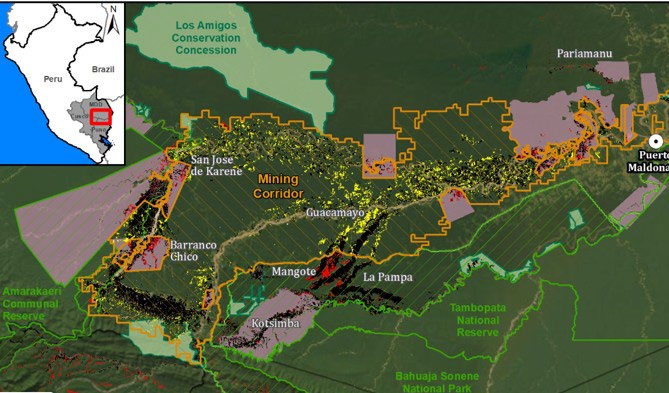The MAAP #208 report, released by Amazon Conservation in 2024, offers one of the most comprehensive visual and quantitative analyses of illegal gold mining in Peru’s southern Amazon between 2021 and 2024. Drawing on high-resolution satellite imagery, the study documents both the persistence and spread of alluvial mining activity in Madre de Dios—an area historically recognized as a hotspot for environmental degradation linked to gold extraction. The report’s maps and time-lapse sequences reveal not only the recovery of certain zones after past enforcement operations, but also the alarming resurgence of mining fronts, some of which have advanced into previously untouched riverbanks and tributaries.
The findings highlight the incursion of mining activity into protected areas and Indigenous territories, where legal safeguards are meant to prohibit extractive operations entirely. According to the study, several of these incursions occur along waterways that are critical for biodiversity and local subsistence, increasing the ecological risk. The report also quantifies the spatial extent of these activities, providing precise measurements of deforested areas, active mining sites, and newly established camps. This quantitative data strengthens the capacity of enforcement agencies, journalists, and researchers to track trends over time and evaluate the effectiveness of operations like “Operation Green Shield.”
The significance of MAAP #208 extends beyond technical monitoring—it underscores the vital role of transparency and public access to environmental intelligence in building accountability. By providing verifiable, open-access evidence, the report supports stakeholder participation, from community leaders and Indigenous federations to policymakers and international NGOs. In the context of social license to operate and environmental governance, such detailed, credible data can help mobilize political will, foster cross-border cooperation, and ensure that enforcement efforts are not one-off interventions but part of sustained strategies that protect both people and ecosystems.

